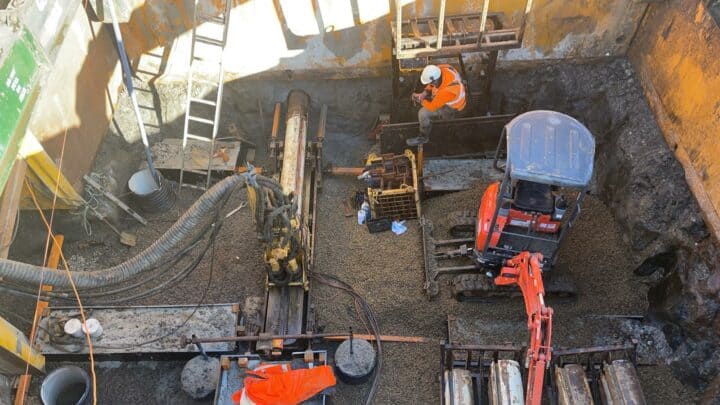Compared to the traditional open cut method of pipeline installation, trenchless methods are still in their infancy, having only started to be developed around the 1970s. While trenchless methods have gained popularity in recent decades due to their reduced site footprint and ability to install under existing infrastructure and environmental formations, they are also an evolving technology with improvements still being made. Edge Underground is at the forefront of this evolution, helping the industry overcome its limitations through improved microtunnelling equipment and practices.
Stuart Harrison, Managing Director at Edge Underground, said since first being developed over 50 years ago, microtunnelling has seen great improvements, from achieving successful installations some of the time, to some machines consistently being able to install pipelines in varying ground conditions with an accuracy of ±10mm.
“The 2000s were a turning point in the industry, with a lot of development taking place over the past ten years or so that has seen us being able to take on projects that we never could’ve previously,” Mr Harrison said.
Productivity, efficiency and pinpoint accuracy
Until the 2000s, there was no microtunnelling machine on the market that had the optimum combination of high efficiency, productivity and pinpoint precision. Many had a combination of these, but none excelled at all three.
Seeing this gap in the market, Mr Harrison decided to develop his own machine – the AXIS laser guided boring system – with the aim to help overcome some of the major limitations he saw that were holding the industry back.
“When I first began developing the AXIS, there was no equipment that had the ability to achieve pinpoint accuracy while also being able to maintain a high level of productivity. So I set out to design a machine that could achieve all three without one being compromised.
“Now, AXIS is the most accurate machine on the market, and is able to install pipelines with an accuracy of ±10mm and complete projects in tight timeframes.”
A retractable solution
Another limitation that the AXIS is able to overcome is that of unexpected changes in ground conditions.
While the geotechnical information is provided at the start of a project, it is not uncommon that it will be incorrect or not show the entire picture across the length of the pipeline route. This is a problem for most microtunnelling machines because if there is a change in ground conditions and the selected drill head is not appropriate for the new conditions, the only way to retrieve the head and change it out is to dig a 911 shaft above it to get it out. This adds extra time and costs to the project.
Identifying this limitation, the AXIS system was designed to retract, allowing a pilot line to be performed so the contractor can inspect the ground, and if any issues are encountered during the installation, the drill head can be changed out quickly and easily with minimal impact on the project.
“Because the pilot line can be retracted, it allows for different drill heads to be effectively trialled during the pilot stage, enabling the contractor to assess the best one for the prevailing ground conditions,” Mr Harrison said.
“Once the pilot line is complete, the microtunneller can commence jacking the final product pipe with a far greater likelihood of success, as the ground conditions are now predominantly known.”
Innovation to continue improving
Mr Harrison said the team at Edge Underground are constantly looking at ways they can improve on what the industry is currently capable of and are encouraged to look at what changes can be made to better the industry even if there isn’t an obvious problem.
“The team is shaping the future of the industry by looking at ways to improve the equipment and how it’s used to make it more capable to handle not only just the various ground conditions that are out there, but do it more reliably and more consistently, so that we’re not having projects where people are feeling let down by trenchless,” Mr Harrison said.
“When we think we’re doing something well, it doesn’t mean we stop looking at it. Even if there is not a problem, we look at it and ask ourselves if we can do it better.
“This kind of thinking and innovation has led us to being able to take on some of the toughest microtunnelling projects in Australia that no other contractor wants to take on because the risk is seen as too high.
“We understand that because we’re still a relatively new technology there are limitations and problems and that these are prohibitive to designers actually making a trenchless design consideration from the start of a project.
“That’s why we are always looking at ways to improve the industry, because at the end of the day, we all benefit from the confidence that comes from improved equipment and practices, and reduced job site risk.”

